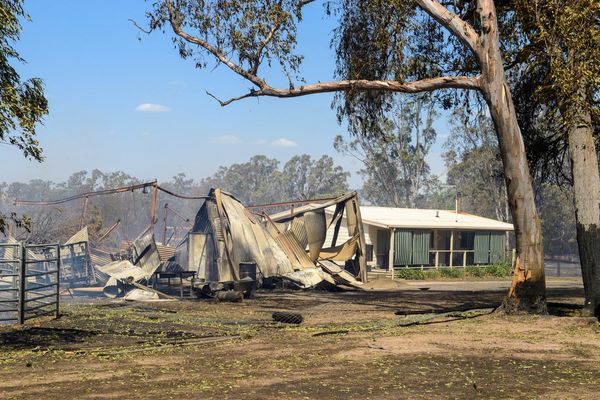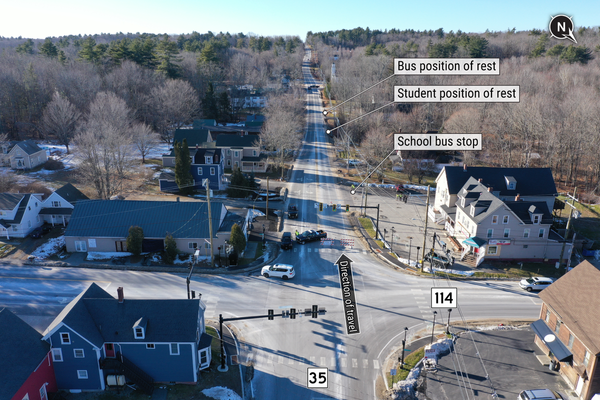
Scientists have long known that human activity often helps pathogens spread.
Human-caused climate change can push disease-carrying mosquitoes or ticks into new places as temperatures rise, and deforestation can expose humans to viruses circulating in once-isolated species. But despite hundreds of studies investigating human influence on infectious diseases, scientists weren't sure whether certain activities matter more than others for increasing risk.
Now, new research clarifies that picture – and suggests that humanity's reshaping of the planet is stoking the spread of dangerous infectious diseases not just for people but also for other animals and plants.
Climate change, the spread of invasive species and the loss of biodiversity (when species decline or go extinct) are all triggers that may play outsized roles in sparking infectious disease outbreaks worldwide, according to an analysis of existing research published this month in Nature. The study found these changes had fairly consistent effects on the spread of infectious diseases regardless of geographic location or species, underlining the need to reduce greenhouse gas emissions and conserve biodiversity, scientists say.
"This is a genuinely monumental paper," said Colin Carlson, a global change biologist at Georgetown University who wasn't involved in the research. While it's important to be conservative about what these kinds of meta-analyses can reveal, he says, "the foundational message here is that global change is completely re-determining disease risk in every system in every form of life on Earth."
A focus on 'global change drivers'
While parasites and pathogens can be influenced by a host of different factors, the researchers focused on five key "global change drivers" that are upending ecosystems — biodiversity change (for example, declines in the numbers of species in an ecosystem or their population size), climate change, chemical pollution, invasive species and habitat loss.
"There are limited resources for monitoring, controlling and managing infectious diseases," says Jason Rohr, a biologist at the University of Notre Dame and study co-author. "It's really valuable for policymakers to have a better grasp on which global change drivers increase the risk of outbreaks the most."
To get that broader view, Rohr and his colleagues built a dataset from nearly 1,000 studies across all continents except Antarctica. The team looked at 1,497 host-pathogen/parasite combinations (such as humans and malaria, or plants and fungal diseases). Across all those combos, the team analyzed several thousand instances of these global change drivers influencing infectious diseases outcomes for plants, animals and humans, such as increasing cases or the severity of a disease.
By taking such a sweeping view of how diseases impact so many different species, instead of focusing solely on human diseases, the researchers were able to look for general mechanisms that might be acting broadly.
"We look for general patterns because if they hold true, they might apply to humans," said Carlson. "Even if these are findings that apply to bats and rodents and primates, but not necessarily us, it's still bad for us if bats and rodents are sicker, he says, in part because those diseases might jump to us.
For all these species, biodiversity loss emerged as the biggest factor in increasing infectious disease risk, followed by the introduction of new species, climate change and, to a smaller extent, chemical pollution.
Changes in biodiversity can stir up diseases in several ways. When a species is introduced to a new place, they often bring their parasites and diseases, as has happened when the Asian tiger mosquito arrived in Europe, bringing along diseases like dengue and chikungunya.
An overall decline in biodiversity can increase infectious diseases through what ecologists call the dilution effect. Disease-causing parasites and pathogens tend to survive and spread better if they infect animal hosts that are abundant rather than rarer host species simply because there are more hosts for them to infect. And when biodiversity declines because of human activity, rare species tend to be the first to go, Rohr says. In their absence, more common species — and the diseases they carry — can often increase, leading to more disease overall.
Bats, which harbor loads of potentially dangerous viruses, offer an example. A study published in April found that bat groups that contained lots of different bat species harbor fewer coronaviruses than less diverse groups. That finding bolsters the idea that biodiversity conservation can prevent the kinds of animal-to-human pathogen spillover events that most scientists suspect caused the COVID-19 pandemic.
Surprisingly, habitat loss — which is a major cause of biodiversity decline — was associated with a decrease in infectious disease outcomes.
The rapid pace of urbanization likely explains this counterintuitive result, Rohr says. When a grassland or forest is bulldozed for human development, most of the plants and animals are wiped out – along with their disease-causing parasites. Urban areas also tend to have better sanitation and access to health care, which could also account for the surprising result, too.
Still, the lack of an effect of habitat loss is somewhat surprising, given scientists have drawn clear links between deforestation and increased risk of diseases like Ebola.
The study shows "a really clear effect of biodiversity loss and not a clear effect of deforestation," says Carlson. "That doesn't necessarily mean deforestation doesn't cause disease emergence, particularly given we know that deforestation causes biodiversity loss."
The discrepancy highlights how nuance can get lost in meta-analyses.
Caveats and limitations
Viewing this problem from such a high vantage point can make it hard to detect the major role certain forces might play in specific locations, or for certain diseases that pose a greater risk to humans, says Erin Mordecai, a disease ecologist at Stanford University who wasn't involved in the study.
When the researchers focused solely on diseases that spread between animals and humans, for instance, climate change emerged as the clearest driver of worse outcomes, with biodiversity loss playing less of a role. That doesn't mean biodiversity loss isn't increasing infectious disease risk for humans for certain diseases, but that existing evidence suggests it might be a bit more complicated.
Another wrinkle stems from the fact that most of the studies included in the analysis treated biodiversity loss, climate change and invasive species as separate entities.
"Global change drivers are acting concurrently," says Mordecai. Climate change is itself causing biodiversity loss and pushing some species into new areas. Habitat loss and deforestation can in turn exacerbate climate change. "Teasing out their separate contributions and interactions remains very difficult and not something likely to show up easily in a meta-analysis."
Caveats aside, the study demonstrates the profound, planetary impact humans are having on disease risk for all kinds of life. It also points to possible solutions, says Mordecai. "I hope this evidence can be used in international policy to spur action on climate change and biodiversity loss due to their negative impacts on disease."
Jonathan Lambert is a Washington, D.C.-based freelance journalist who covers science, health and policy. He's been a staff writer at Grid and Science News and has contributed to NPR, Nature News, Quanta Magazine and the Dallas Morning News. He holds a Master's degree in evolutionary biology from Cornell University. Follow him on twitter @evolambert, or on bluesky @jonlambert.bsky.social.







